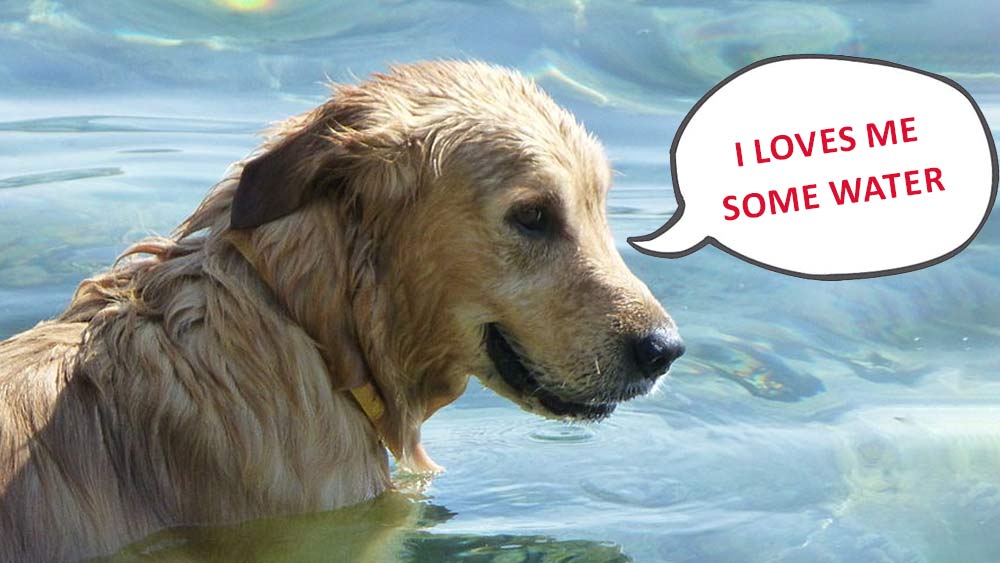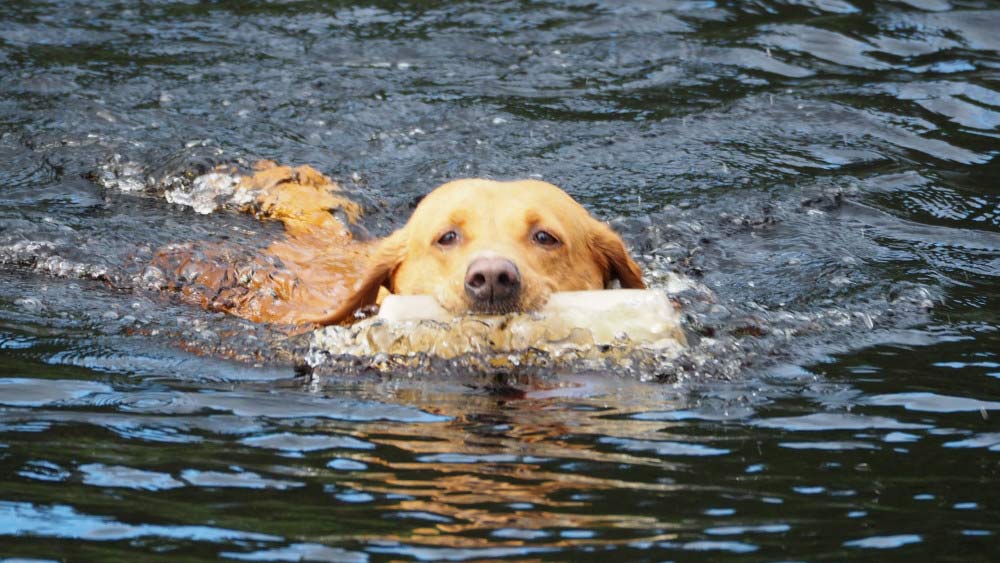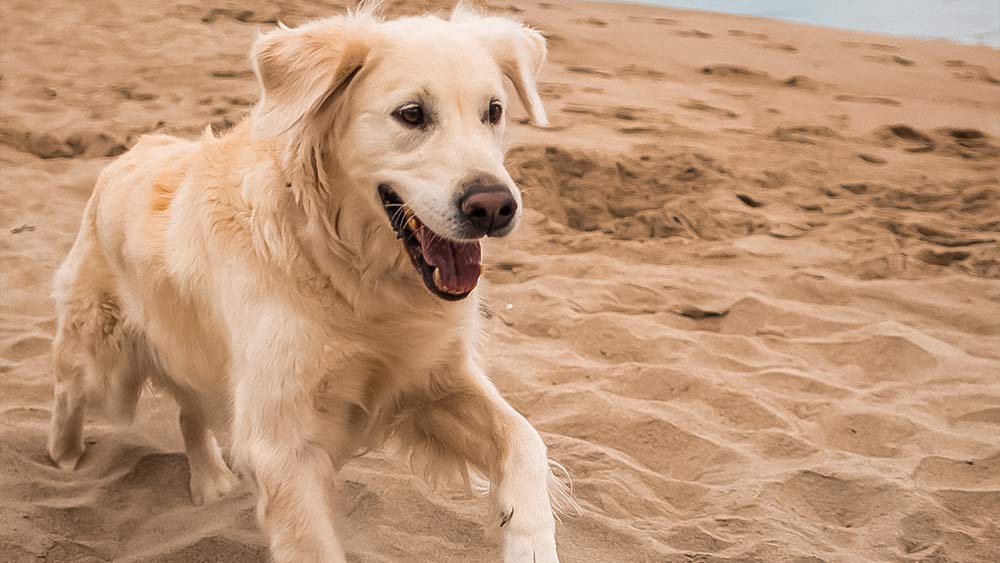The short response is yes. Golden Retrievers were developed as hunters’ assistants of waterfowl. Thus, they have extraordinary swimming abilities. They nonetheless have the potential to swim intuitively in addition to the potential to fetch. As a result, Golden Retrievers have been created with all the physical characteristics and attributes that allow them to be excellent swimmers.
Are Golden Retrievers good swimmers?
Yes, they are good swimmers for the following reasons:
- Hydrophilic coating
- Strong legs
- Form of body
- High Energy levels
- Size appropriate
- Strong instincts
They are medium in size, making them not too heavy to float. Their legs are strong enough when swimming and large enough to support their body in the water.
They also have a second coat that is dense. Water cannot get past the outer covering. As a result, it can fend off moisture and avoid becoming bogged down. The undercoat assists significantly in cooler water, keeping the skin warm and dry.
Golden retrievers are excellent swimmers primarily because of their high energy levels, which allow them the stamina needed to swim longer without becoming tired or putting any strain on the body.
watch this video from YouTube to learn how much golden retrievers love water!
Essential tips for teaching your golden to swim
Swimming presents risks. Dogs that enjoy the water might get into trouble. Swimmers should always put safety first, whether in a swimming pool, ocean, lake, river, or stream. Using these methods, you can take your dog swimming without risk.
Start Young (after 3 months)
Young golden retrievers, like humans, are unable to swim. Generally speaking, puppies under the age of three months old are not developmentally ready to swim. After your golden puppy reaches 3 months of age, you can start taking him swimming less frequently.
Slow and steady wins the race
When you first introduce your dog to the water, don’t assume he can swim. When they get wet, some dogs panic and sink like a rock. Morning soaks in the tub are a great way to kick off the day. Ideally, you’d like to gradually add a couple of inches over the course of a few weeks. In some cases, it takes up to a year for a dog to develop into a confident swimmer. Don’t give a swimmer full freedom to swim as far as he likes before you’ve evaluated his skillset.
At first, Stay Leashed
When you’re teaching your dog to swim, keep the leash on him at all times. You can get him back quickly if you need to.
Don’t make your dog swim by force.
There are goldens that absolutely despise water. Pay attention if your dog is shaking, whining, crying, urinating on himself, or attempting to flee. Try to reassure him and move slowly, but be prepared to stop if he expresses hesitation.
Don’t force your dog to swim, even if he enjoys it. Perhaps he is hot, tired, irritable, famished, thirsty, or grumpy. This is going to be a stressful situation for the both of you.
Start preparing for a trip to the beach.
Don’t leave Fido at home when you and your pals hit the sand. The beach is open to you and your dog. Be careful when allowing your dog to swim. In the event of rough seas, you shouldn’t allow them to swim too far. Avoid marine life in general, but especially jellyfish. Dangerous organisms are more prevalent in the ocean than in freshwater ponds and lakes.
Be Cautious in the Water
Treat and praise your dog before and after swimming lessons. Rinse your dog off with fresh water and pet him when you’re done. Your dog’s skin and eyes will thank you for taking this precaution before entering the pool, as pool chemicals, sand, and debris can all cause irritation.
Keep an eye on your pet after it emerges from the water. Ear infections brought on by parasites and bacteria often manifest gradually over the course of several days. Keep an eye out for any unusual behavior from your pet dog. You should take him to the vet if you see anything out of the ordinary.
Stay away from potential water hazards.
Be sure the water is safe for swimming before diving in. Both you and your dog are susceptible to bacteria in the summer.
Pets shouldn’t be taken into waters they’ve never seen before. Dangers include a high concentration of bacteria, shallowness, rip currents, undertows, parasites, broken glass, and stinging jellyfish.
Benefits of letting your golden retriever swim
Promotes health
Your golden retriever will benefit greatly from regular swim sessions. Swimming for one minute is like jogging for four. swimming helps to maintain a healthy skin and coat by boosting circulation, metabolism, and immune system function.
Good for joints
Submerged, your dog’s weight is supported by the water, reducing the stress on its skeletal system that would otherwise be caused by running or playing on dry land. Dogs benefit from swimming because it encourages them to move in ways that are different from their normal routine on land, thereby increasing their range of motion. Dogs with mobility issues like arthritis can benefit greatly from swimming.
For them, it’s a way to unwind.
Your golden retriever’s mental and physical health will benefit from some time in the water. To maintain their intelligence and happiness, canines require the same kinds of play and entertainment that humans do. A dog is more likely to look forward to going to bed when it is both tired and happy from a day of swimming.
Pain can be reduced by swimming in warm water.
Dogs can benefit from swimming in warm water because it helps to build muscle, improves circulation, and reduces the stress on the joints.
It’s like a workout to lose weight.
Swimming is a safe and effective way for overweight golden retrievers to burn calories and speed up their metabolism. Dogs with excess weight can benefit from regular swimming sessions and a healthy diet.
Are golden retrievers natural swimmers?
Golden retrievers have excellent swimming skills by nature, even as young puppies. All dogs were bred in the past for a particular function, duty, or job.
Not an exception are Golden Retrievers. The Golden Retriever needed to be an excellent swimmer to do this successfully. Golden Retrievers are highly accustomed to being in the water because their ancestors were raised to retrieve birds and other game from lakes and rivers.
They not only enjoy being in the water, but they also possess physical qualities that make them good swimmers.
watch this cute video of parents teaching their growing puppies how to swim in a pool.
How long can golden retrievers hold their breath underwater?
Underwater dogs are capable of maintaining their breath. While babies dive below the water to get a toy or only for fun, an innate survival reflex tells them to preserve their breath. Like how dogs close their eyes after entering the water, this herbal response has an equal effect.
A dog can maintain its breath for an average of 5 to 8 seconds. But this time may also vary depending on several factors. For instance, it’ll be more challenging for puppies with short snouts, like Pugs, to hold their breath.
There is a direct physical reaction while your dog’s face is blanketed in water. All animals revel in what is referred to as the Mammalian Diving response (MDR) once they are in the water.
Limiting the animal’s oxygen consumption is the primary goal of the mammalian diving reaction. Consequently, to maintain oxygen, while mammals submerge underwater, their blood arteries narrow. Thanks to this reaction, your heart, brain, and other vital organs can prioritize getting enough oxygen.
How old should a Golden Retriever be before swimming?
It is advised to hold off on swimming until they are 2 to 5 months old.
Golden retrievers under two months old lack the strength and muscle development necessary for sustained buoyancy. They may get injured by chilly temperatures and harsh pool chemicals like chlorine because of their delicate skin.
Although you should wait to begin swimming lessons, your dog doesn’t need to wait to develop a lifelong love of the water. Introduce toys and let your puppy stroll around in an inch of water to make bath time enjoyable. This will enable them to become accustomed to having damp paws.
How far can Golden Retrievers swim?
Golden retrievers can swim for around 40 minutes before becoming weary, and during that time, they can travel a considerable distance. Due to their high energy levels, as well as several physical traits like their powerful hind legs and their double coat that keeps them warm and dry, they have tremendous endurance.
Are golden retrievers waterproof?
The Golden Retriever is ideal for outdoor activities thanks to its thick coat, which is gorgeous and waterproof. The training of Golden Retrievers is enjoyable and straightforward due to their intelligence and eagerness.
Golden retrievers can withstand water. It’s simply their coats. Golden was bred to have a double coat, unlike many dog breeds (as opposed to a single coat). There are two layers of fur for the best possible warmth and protection.
The undercoat of a Golden Retriever has a wool-like texture. In actuality, just like your wool coat, it’s designed to keep the dog warm. In other words, these canines are better equipped to spend more time swimming in cold water.
The topcoat, also called “guard hairs,” is the second layer of fur. Additionally, the topcoat was created to protect the Golden Retriever from dirt and debris, as its name suggests. But more significantly, it repels water, keeping your dog’s skin smooth and dry.
These coat characteristics provide Golden Retrievers significant benefits in the water.
Conclusion
Dog swimming can benefit in a variety of ways, including:
- Allowing to let go of extra energy
- Calorie expenditure for weight loss
- Bolster joints and muscles
- Reducing discomfort in dogs with arthritis or joint issues
- Keeping cool when it’s hot
Even though Golden Retrievers have innate swimming reflexes, it is not a good idea to let them swim unsupervised.
You’ll need a personal flotation device (PFD) or life jacket that fits your dog’s body correctly and allows easy mobility while worn. Getting a life jacket with sturdy clips and adjustable straps is advised.
Put the life jacket on when you’re at home or out for walks to get your dog accustomed to wearing it for extended periods.
It is advised to begin training at a pool where there is space for the dog to wander about because it will be safer.
Use a toy or a treat to entice your dog into the water so that it will feel good about going in and will be more likely to do it on its own.
Throwing your dog in the pool or forcing it in could scare it away and put its life in danger.
Let your dog grow used to being in the water and getting wet by starting in a shallow pool region.
We hope this article about golden retrievers swimming was helpful. Please let us know in the comments section if you have suggestions or helpful tips to share.
























